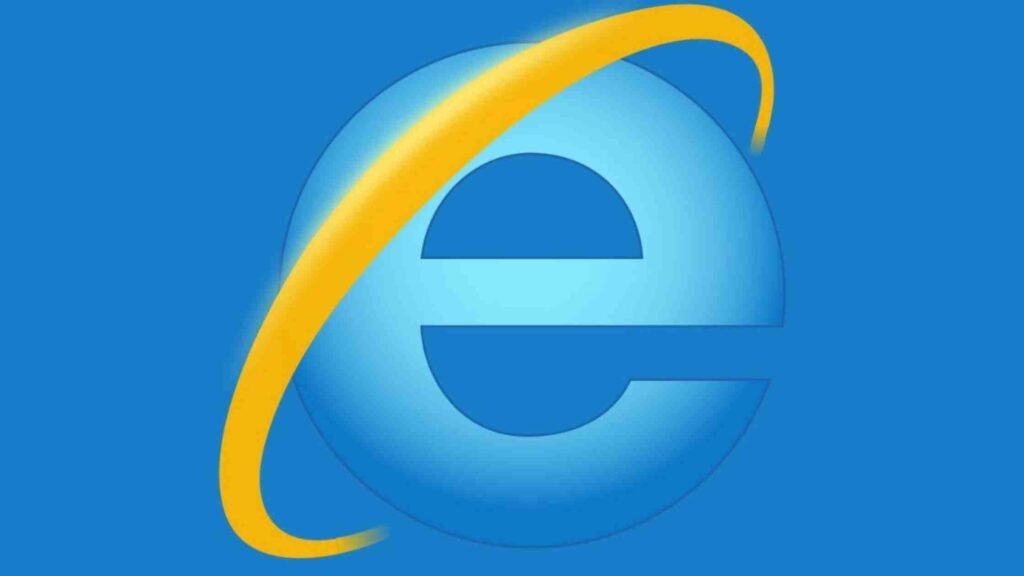Internet Explorer Discontinued – Every 90s person can relate to Internet Explorer. It was probably every 90s’ first web browser. It is nostalgic, no. People learned about the internet and the web world through Internet Explorer. Its name justifies its value. It used to let us explore the internet. It is always heart-wrenching when we forget our first, whether our first love, first kiss, first bike, or our very first web browser. Unfortunately, this is what just happened, and Our first will last. Yes, Microsoft officially retired Internet Explorer on June 15, 2022.
The Microsoft-developed Internet Explorer graphical web browser series, used with the Windows family of operating systems, has been retired. It was made available in 1995 as a component of the Windows 95 add-on package Plus! In the late 1990s, Microsoft invested more than $100 million annually in Internet Explorer; by 1999, more than 1,000 people were working on the project. In favor of the new browser Microsoft Edge, new feature development for the browser was stopped in 2016. On November 30, 2020, Microsoft Teams removed support for Internet Explorer and Microsoft 365 on August 17, 2021, and support for IE desktop applications ended on June 15, 2022, for Windows 10 Semi-Annual Channel.
It was the most popular online browser until 2003, with a 95% usage share. This happened after Microsoft employed bundling to defeat Netscape, the preeminent browser in the 1990s, in the first browser war. Since the introduction of Firefox (2004) and Google Chrome (2008), as well as the rising popularity of mobile operating systems like Android and iOS that do not support Internet Explorer, its usage share has decreased. According to StatCounter’s statistics, Internet Explorer is expected to have a market share of roughly 0.31% across all platforms in 2022, placing it ninth after UC Browser. It is ranked sixth with 0.79% on traditional PCs, the only platform where it has ever had a sizable share, just behind Opera.
DiscontinuedNews is impartial and independent, and every day, we create distinctive, world-class programs, news, and content that inform, educate and entertain millions of people worldwide.
How will it affect the users?

Opening Internet Explorer will gradually reroute visitors to a new cutting-edge browser, Microsoft Edge with IE mode, over the coming few months. The Internet Explorer icon will still be present on users’ devices (such as the taskbar or the Start menu), but if they click it to launch Internet Explorer, Microsoft Edge will launch instead with quick access to IE mode. Internet Explorer will eventually be permanently disabled as part of a subsequent Windows Update, after which the Internet Explorer icons on customers’ devices will disappear.
Users’ Internet Explorer bookmarks, passwords, and preferences will be imported as part of this redirection procedure, making the switch to Microsoft Edge comfortable and straightforward. Users can permanently erase or manage their data in Microsoft Edge anytime through the Settings menu.
Microsoft has stated three reasons for retiring Internet Explorer
One of the most prominent factors is Microsoft Edge’s enhanced browser security. Microsoft estimates that more than 579 password attacks are made every second. The Microsoft Defender SmartScreen in its Chromium-based Edge browser offers good protection against malware and phishing attempts on Windows 10. The company says the Microsoft Edge browser “can issue security patches for immediate vulnerabilities within days, if not hours.”
Microsoft urges users of Internet Explorer to switch to Edge because of the new browser’s improved productivity. Microsoft recently unveiled the Sleeping tabs feature, which the company claims use 16% less memory and 26% less CPU power while extending the battery life of the devices running it. Additionally, the Microsoft Edge browser features a feature that allows you to arrange all open tabs vertically on the left side of the screen.
Microsoft states the Edge browser’s compatibility with both old and new websites as the third argument in favor of it. Legacy Internet Explorer-based websites and applications can be used with Microsoft Edge. Additionally, because it is built on the Chromium open-source project, it works with contemporary websites.
